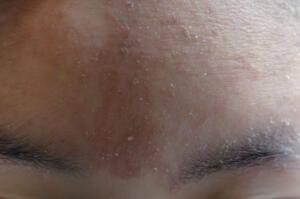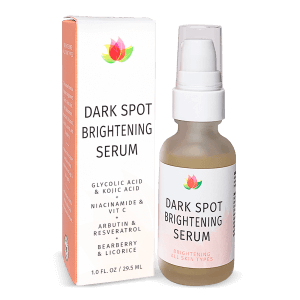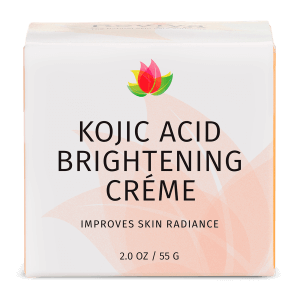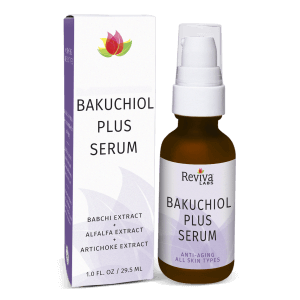Natural, Reviva Labs, Skin Care
Is Uneven Skin Tone Normal?
Uneven skin tone is a common skin condition characterized by patches of skin that appear darker or lighter than the surrounding areas. This condition, also known as hyperpigmentation or hypopigmentation, can affect anyone, regardless of skin type or color. Various factors contribute to uneven skin tone, including sun exposure, hormonal changes, genetics, and skin inflammation.
The natural pigmentation of our skin is determined by melanin, a pigment produced by cells called melanocytes. When these cells become damaged or unhealthy, it affects melanin production, leading to pigmentation disorders. For many, these changes are often a cosmetic concern rather than a medical issue.
Causes of Uneven Skin Tone
Sun exposure is one of the leading causes of uneven skin tone. Ultraviolet (UV) rays can trigger an overproduction of melanin in certain areas of the skin, resulting in dark spots or patches known as sunspots or age spots. Similarly, hormonal influences, particularly those associated with pregnancy or the use of oral contraceptives, can lead to a condition known as melasma, characterized by brownish patches on the face.
Another significant factor is post-inflammatory hyperpigmentation (PIH). This occurs when a skin injury or inflammation (like acne) heals and leaves a flat area of discoloration behind. While PIH can fade over time, the process can be slow and the discoloration noticeable.
The Normalcy of Skin Tone Variations
It’s important to recognize that variations in skin tone are normal and common. A study by the American Academy of Dermatology found that hyperpigmentation is a prevalent condition, affecting individuals of all skin tones. The study suggests that nearly 65% of individuals experience some form of hyperpigmentation at some point in their lives (American Academy of Dermatology).
Given its prevalence, uneven skin tone is more a rule than an exception in skin appearance. Most adults will notice some variation in their skin color due to one or more of the causes mentioned above. While many seek treatment for uneven skin tone primarily for aesthetic reasons, it is a natural and frequently occurring skin condition.
Treatment and Management
When it comes to treating uneven skin tone, there are multiple options available ranging from over-the-counter remedies to professional treatments. Skincare products containing ingredients like vitamin C, retinoids, and hydroquinone can be effective in treating hyperpigmentation by promoting cell turnover and reducing melanin production.
For those looking for more immediate results, dermatological procedures such as chemical peels, laser therapy, and microdermabrasion can be considered. These treatments should be carried out by licensed professionals and tailored to individual skin types to prevent further pigmentation issues.
Preventative measures are also crucial in managing uneven skin tone. Regular use of sunscreen with a high SPF can protect the skin from harmful UV rays, which are a significant contributor to pigmentation issues. Additionally, adopting a skincare routine that includes antioxidants and anti-inflammatory products can help maintain even skin tone and overall skin health.
Lifestyle and Skin Health
Lifestyle factors also play a crucial role in the health of your skin. Diet, hydration, and stress management can influence your skin’s appearance and its ability to recover from damage. Consuming a balanced diet rich in fruits, vegetables, and lean proteins provides the nutrients necessary for maintaining healthy skin.
Hydration is equally important; drinking adequate water helps keep the skin moist and flushes out toxins that could contribute to discoloration. Furthermore, managing stress through activities like yoga, meditation, or regular exercise can reduce the likelihood of skin issues exacerbated by hormonal imbalances.
Embracing Natural Skin
While treatments and preventive measures are available, embracing your natural skin tone, including its variations, is also a healthy approach. Understanding that these changes in pigment are common can reduce the stigma associated with uneven skin tone and promote a more positive self-image.
The journey to accepting natural skin variations can be bolstered by education and support from skincare professionals who can provide guidance tailored to individual needs. The focus should always be on maintaining healthy skin rather than achieving perfection, which is an unrealistic and unattainable goal.
Understanding Uneven Skin Tone
Uneven skin tone is a normal and widespread condition influenced by various internal and external factors. Recognizing the normalcy of these variations can help reduce unnecessary concern and promote healthier attitudes towards skin care. Whether through preventative measures, treatment options, or lifestyle changes, managing uneven skin tone involves a holistic approach that prioritizes skin health over mere cosmetic appearance. By understanding and addressing the underlying causes of skin tone variations, individuals can maintain both the health and appearance of their skin.











